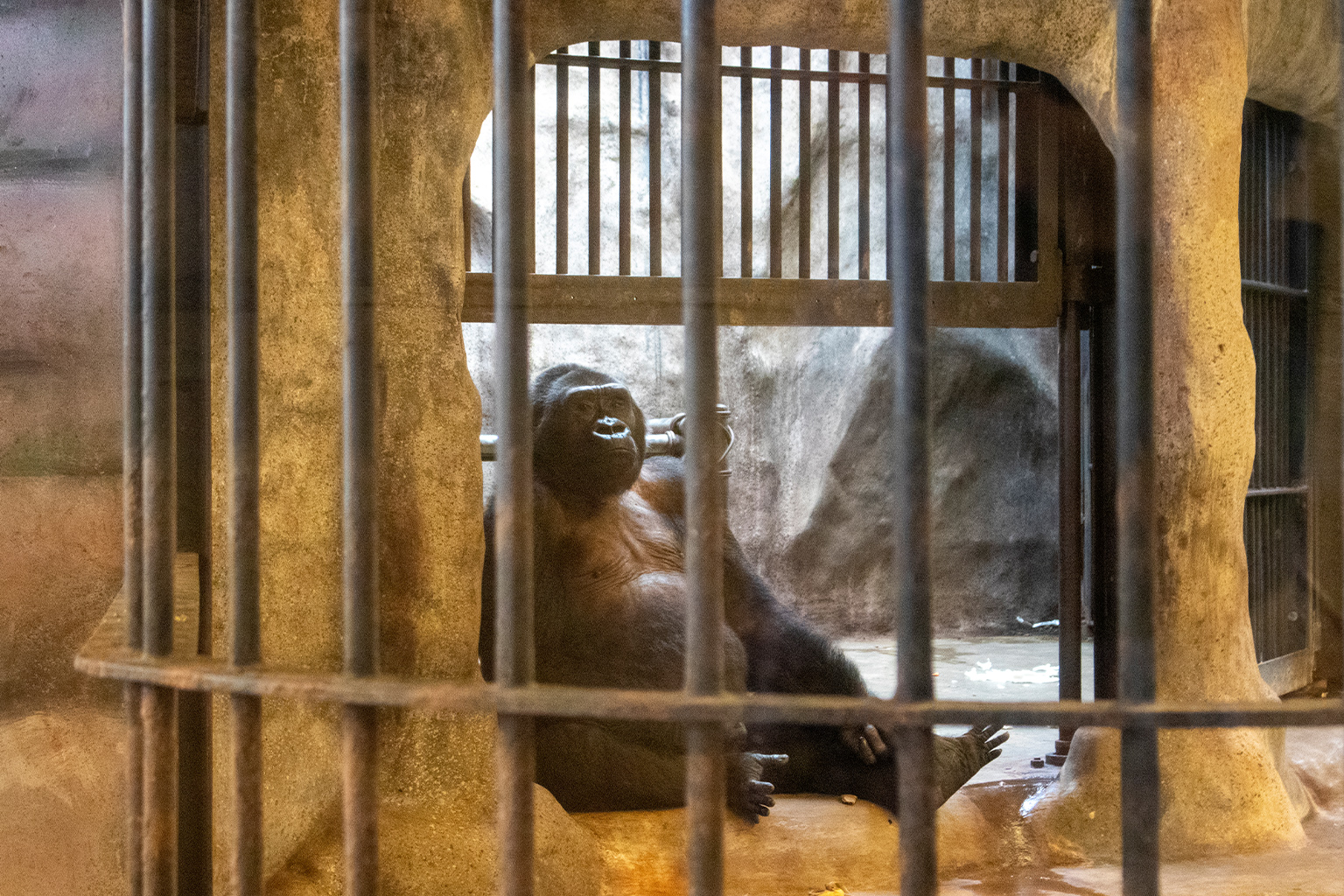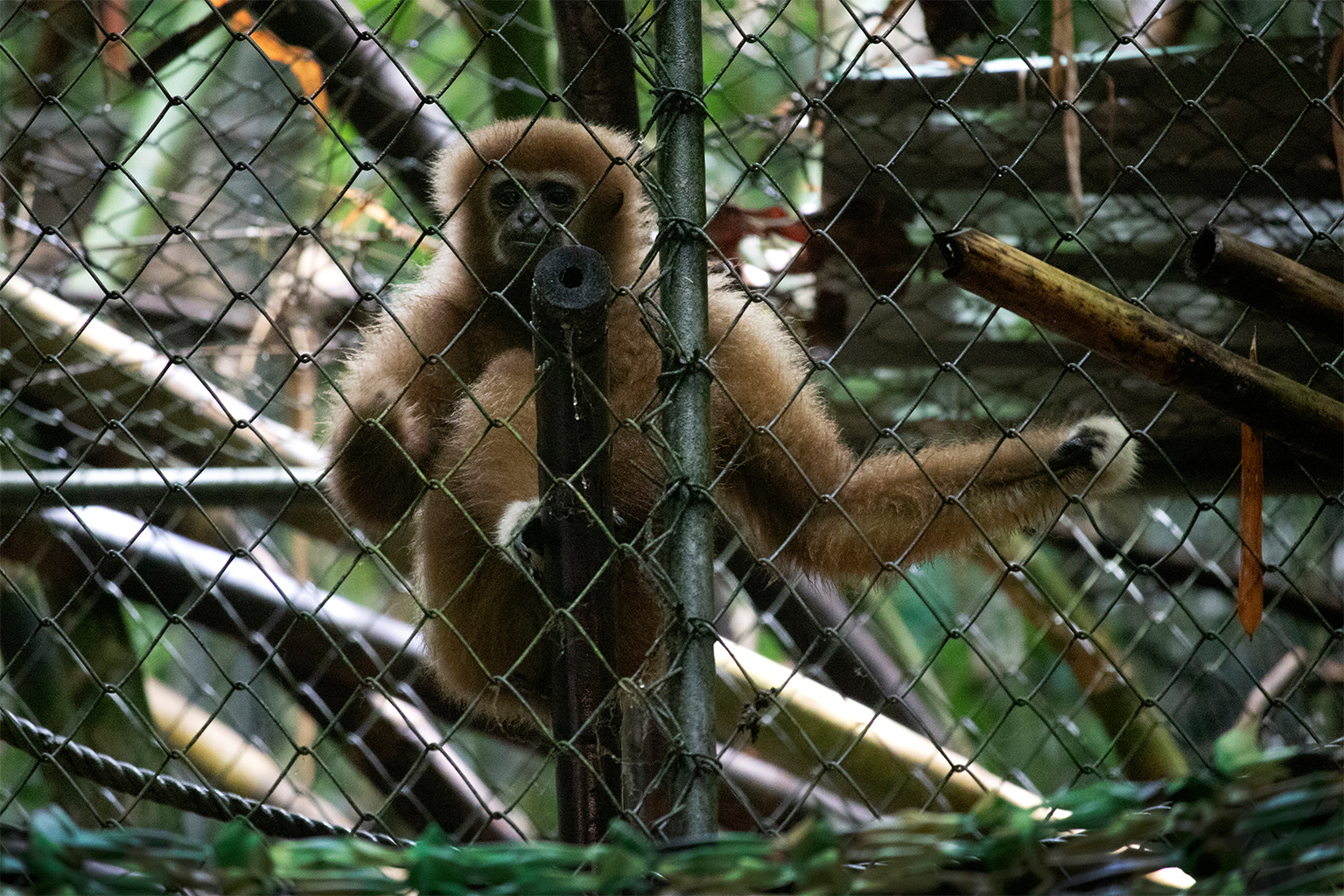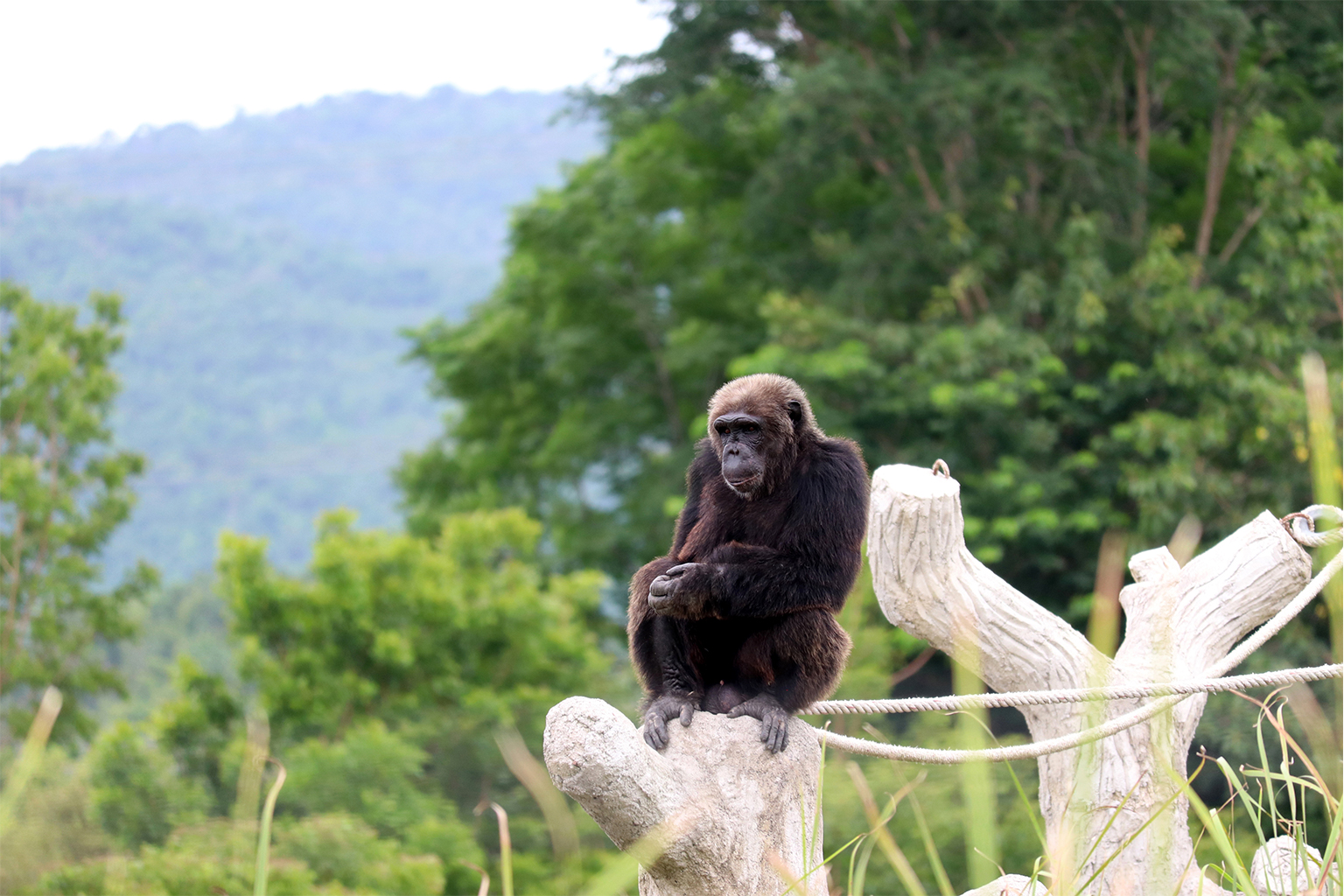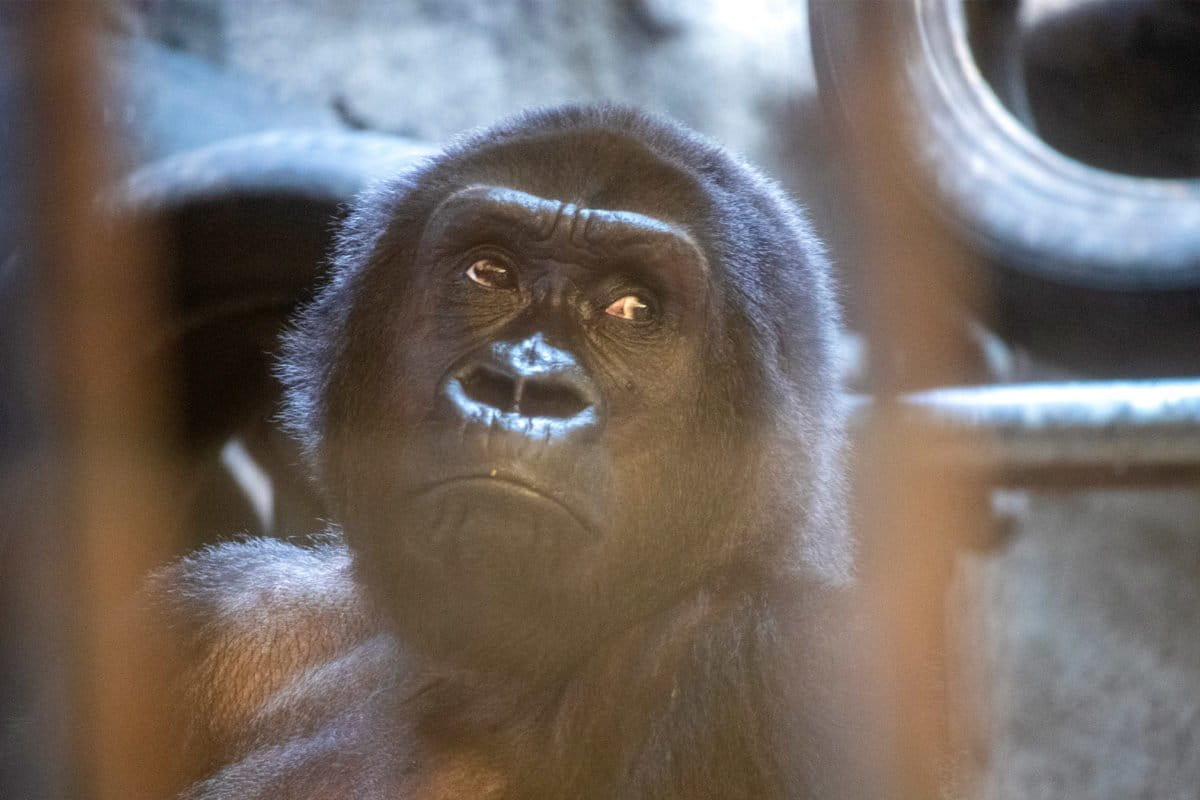- The welfare of rare and often threatened species in Thailand’s tourism and pet trades has long been a concern for animal rights activists.
- The conditions in which many of the animals are kept became even direr during the COVID-19 pandemic, when border shutdowns meant no visitor revenue to care for the animals.
- NGOs are working to rescue and rehabilitate some of the animals from zoos and private owners, but acknowledge that few, if any, of the animals can ever be released back into the wild.
- They add that rescue and rehabilitation is only part of the solution, and that more focus should go on protecting the natural environment and habitats of these animals over the long term.
BANGKOK — A run-down department store tucked among Bangkok’s skyscrapers is home to the rooftop Pata Zoo, where nearly 300 animals pace in cages littered with feces, food scraps and trash. Bua Noi, the main attraction at the zoo and the only gorilla known to be in Thailand, has been kept in a cage here for 30 years, isolated and alone.
“This zoo follows no animal care or welfare standards,” Georgina Groves, the executive director of Wild Welfare, a U.K.-based nonprofit, said in a press release. “For too long this has resulted in inaction by the zoo and consequently terrible animal suffering.”
After years of pandemic restrictions due to COVID-19, tourists are coming back to Thailand, eager to lounge on beautiful beaches and see the country’s remarkable animals. But all is not well with those animals — elephants, tigers, primates, and many more. Without the money from tourists during times of travel restrictions imposed during the pandemic, some captive animals languished in appalling conditions. Even before COVID-19, animals used in tourist attractions, zoos and as pets were often mistreated and abused.
Edwin Wiek is the founder of Wildlife Friends Foundation Thailand (WFFT), an NGO working to rescue and rehabilitate animals caught in this trade. Few of those animals will ever be able to live in the wild, according to Wiek, who gave the example of a captive gibbon, a small ape found in Southern Asia, that has been used in the tourism and pet industries, including in Thai bars and strip clubs.

“That animal has no natural instincts anymore,” Wiek said. “It doesn’t know how to fight for itself, to build up a territory, to protect a territory.”
A wildlife sanctuary such as Wiek’s has been suggested as the right place for Bua Noi, the eastern gorilla (Gorilla beringei) at Pata Zoo, who, like many other abused animals in the trade, has no chance of living in her natural habitat. Multiple petitions over the past two decades have demanded that Thailand’s Department of National Parks cancel Pata Zoo’s license to operate. More than 115,000 people signed a petition to give Bua Noi and the zoo’s other primates a better environment. Pata Zoo officials did not respond to Mongabay’s requests for comment.

The zoo is still in business and Bua Noi remains in her cage. Animal welfare and protection laws in Thailand were drawn up to protect native wildlife, leaving the door open for non-native animals, like Bua Noi, to be captured from the wild in other countries and brought to Thailand for the pet and zoo trade.
Even for native animals, the law is poorly enforced. Some tigers (Panthera tigris), which are native to Thailand, are bred in captivity and remain in captivity. The inbreeding of tigers and other animals for the pet, zoo and traditional medicine trades can have serious health effects like stunted growth, spinal deformities, limb and breathing deformities, and brain dysfunction. The Department of National Parks declined to comment on the lack of enforcement.
One of the most popular tourist destinations in Thailand is the island of Phuket, about 850 kilometers (530 miles) south of Bangkok. The lone zoo in Phuket went out of business in late 2021 due to the COVID-19 pandemic’s impact on tourism. WFFT rescued some of the animals from Phuket Zoo, including a tiger named Mee Mee. Staff at WFFT say Mee Mee has been visibly inbred, resulting in crossed eyes and incessant drooling.

A few miles from the old Phuket Zoo, Tam, a 28-year-old white-handed gibbon (Hylobates lar) swings by two fingers in her enclosure at her now-permanent residence, the Gibbon Rehabilitation Project (GRP) in Phuket. The GRP works to rehabilitate gibbons that were kept as pets or in zoos and release some of them into the wild. But life in the wild is not in Tam’s future. Tam was kept illegally as a pet and was beaten so severely, according to the GRP, that one of her hands and one of her feet needed to be amputated. She subsequently lost three fingers on her remaining hand.
“All the gibbons we take care of have been through hell,” said Thanaphat Payakkaporn, general secretary of the Wild Animal Rescue Foundation of Thailand, which operates the GRP.


Even when animals are confiscated from private owners, they don’t always survive. When the Tiger Temple, a popular monk-run tiger tourism spot, closed in 2016, the Thai government took nearly 150 of its tigers to government wildlife centers, where they didn’t fare well.
“Only 17 or 18 are alive,” Wiek said.
Of course, rehabilitating and releasing animals into the wild is just part of the answer, according to Wiek, who said more focus should be put on protecting the natural environment and habitats of these animals over the long term.
“Protect the forest properly, make sure the animals are undisturbed, there’s no poaching, there’s no encroachment and in the meantime, you could work on ecotourism to sustain the expense and the cost of doing it,” Wiek said.
It’s a tall order, so, for now, NGOs are doing what they can. On a tour of the WFFT facility, a puma (Puma concolor) named Jan, another non-native species, who had been kept as a pet in a 3-by-4-meter (10-by-13-foot) cage for most of her life, waited at the fence of her enclosure for Wiek to scratch her back, while the group watched.

The chimpanzee (Pan troglodytes) at the WFFT facility, Canoe, also seems to have a special bond with Wiek. Yet another non-native species, Canoe was kept in a small cage at a school in Bangkok for 35 years of his life before he was brought to the center. His cage is displayed in front of his enclosure and serves as an educational tool for visitors.
As the tour cart drove away, Wiek promised Canoe he would be back later. Canoe climbed to the highest point of his enclosure to watch the group drive away on the gravel road past his home.

Banner image: Bua Noi in her enclosure at Bangkok’s Pata Zoo. Image by Shannon Brault/IWMF.
Siripanee Supratya contributed reporting. This reporting was supported by the Round Earth Media program of the International Women’s Media Foundation.
